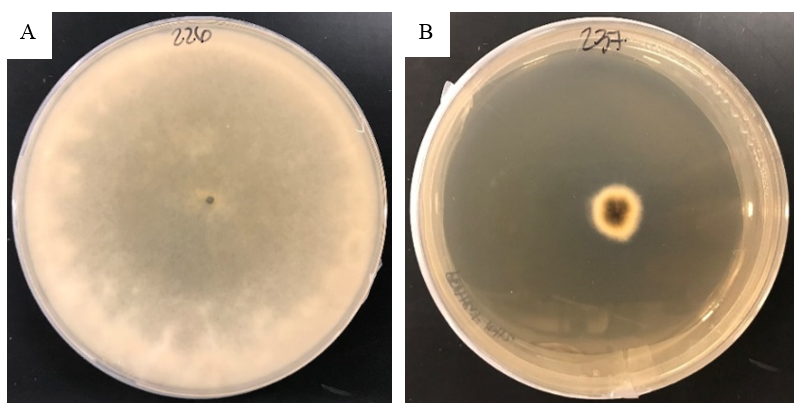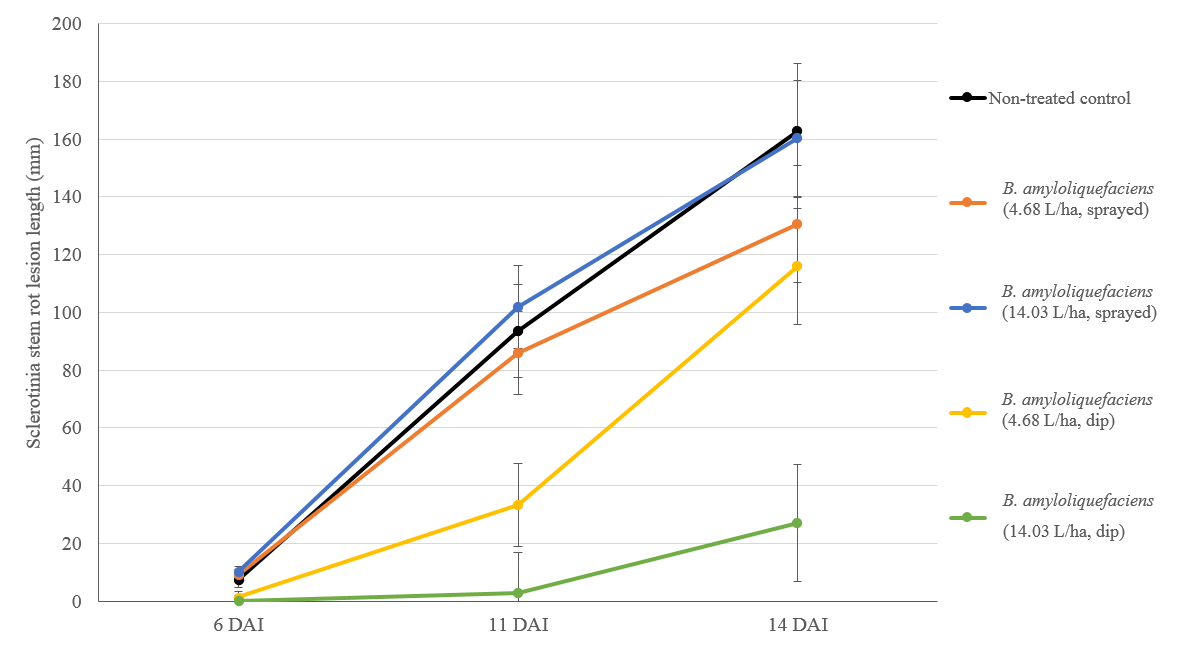Update – Management of Sclerotinia sclerotiorum in soybean using the biofungicides Coniothyrium minitans and Bacillus amyloliquefaciens
Two biofungicides, Coniothyrium minitans and Bacillus amyloliquefaciens, are currently available and labeled to limit or suppress S. sclerotiorum in soybean. These biofungicides can be applied in place of synthetic foliar fungicides to provide an alternative mode of action for the control of Sclerotinia stem rot. However, limited information is available regarding the efficacy of C. minitans and B. amyloliquefaciens as biocontrol agents of S. sclerotiorum in soybean and the sensitivity of the biofungicides biological activity on S. sclerotiorum to pesticides commonly used in soybean production systems. The goal of this research was to provide management recommendations for S. sclerotiorum in soybean using C. minitans and B. amyloliquefaciens and to develop guidelines for how to incorporate the biofungicides into an established soybean pest management program.
Through experiments in the laboratory, growth chamber, and field we demonstrated that B. amyloliquefaciens and C. minitans are effective biocontrol agents of S. sclerotiorum in soybean. However, antagonistic relationships exist between the biofungicides and certain preemergence, postemergence, and synthetic fungicides used in soybean production systems. And therefore caution should be used when incorporating the biofungicides into season long soybean pest management practices.

Figure 1. Radial mycelial growth of S. sclerotiorum for the A) Non-treated control or B) C. minitans treatment.

Figure 2. Efficacy of Bacillus amyloliquefaciens at 4.68 L/ha or 14.03 L/ha applied using a dip or spray method for reducing Sclerotinia stem rot lesion length (mm) at 6, 11 and 14 days after inoculation (DAI) in the growth chamber.
